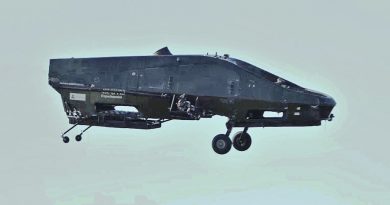
Nammo: from extra-long to very short range
Two years ago one of the most interesting presentations we attended at Eurosatory was that on the ramjet-powered 155 mm ammunition which development was launched by Nammo, the Nordic company specialised ammunition and rocket motors.
Ramjet propulsion would definitely had been one of the key topics even at the 2020 edition of the Paris exhibition, thus we tried to get some information to provide our readers with a follow-on on that developing technology. The unveiling of its ramjet technology at Eurosatory led to a considerable interest, and since two major events took place; on June 19, 2019, during the Paris Air Show, Boeing and Nammo signed a teaming agreement to jointly develop and produce the next generation of extended range artillery projectiles. On April 20, 2020, the US Department of Defense and the Norwegian Ministry of Defence announced their intent to continue a bilateral effort to explore advanced solid fuel ramjet technologies. Known as THOR-ER (Tactical High-speed Offensive Ramjet for Extended Range) it is defined as an Allied Prototyping Initiative (API) effort under the Directorate for Advanced Capabilities within the Office of the Under Secretary of Defense for Research and Engineering. Links between Nammo and the US are very strong both industrially and on programmes, with key locations including Nammo Raufoss in Norway, and Nammo Defense Systems Inc., Nammo’s US manufacturing arm, based out of Mesa, Arizona.

Nammo has closely considered the best balance between high speed and range, coming to the conclusion that endo-atmospheric weapon systems must remain within the Mach 4-5 speed envelope, higher speeds hitting the exponential temperature increase obstacle. According to company sources aerodynamic heating can bring to a 900 °C temperature at Mach 4, which becomes over 1,400 °C at Mach 5. Higher speed without the use of exotic and costly materials can only be considered viable when a system can leave the atmosphere, however we enter into space related issues with infrastructures going well beyond tactical systems.
Nammo started working in this field in 2015, the work being oriented on two main issues, missiles and artillery. For missiles the aim is to consistently increase range and speed by adding a sustaining motor to those weapons, the ramjet providing thrust for a much longer time compared to current solid rocket motors. This would have different beneficial effects when considering two specific missile areas, ground-based air defence (GBAD) and air-carried missiles. Nammo considers that for decades western GBAD systems were developed to counter the theatre ballistic missiles (TBM) threat, partly sacrificing their capability to effectively provide area defence against high manoeuvrable aircraft and cruise missiles. As for aircraft launched missiles, the advent of the A2AD (Anti-Access and Area Denial) scenario generates the need to increase range and speed for air-to-ground weapons, while considering air-to-air combat the greater energy inherent to a ramjet-powered missile will considerably increase the footprint of the no-escape zone around the launch aircraft, the enemy aircraft manoeuvres aimed at exhausting the missile energy would become more and more difficult.
Nammo is working hard on developing its ramjet technology, and has since Eurosatory 2020 demonstrated ramjet prototypes of much greater diameter, showing the concept flexibility. Both fuel weight and thrust has been increased, which allows the company to scale-up tests with increased levels of energy. The US-Norwegian agreement aims at developing a series of prototypes to be fired initially at the Andoya Test Centre in Northern Norway the aim being that to verify the propulsion system applicability to a range of weapons, not that of developing a specific weapon system.
Nammo experts consider that for ground-based solutions range could reach 300-350 km, while air-launched solutions ranges could even exceed 500 km, which would mean becoming a game changer in the air-to-surface weapons arena, giving fifth-generation western aircraft such as the F-35 a definite edge over their opponents.

Shifting from hundreds of kilometres to hundreds of meters, Nammo has concluded in 2019 the qualification testing of its M72 FFE, the acronym meaning Fire From Enclosure. Such a solution has been around for nearly a decade, however the first attempt several years ago failed to achieve successful qualification.

The adoption of a new salt-water based counter mass has now allowed overcoming the problem, allowing reducing the back blast energy generated by the rocket motor while maintaining performances very close to those of the standard M72 versions, bringing the acoustic, thermal and visual signatures well within the limits of USMC requirements, according to Nammo representatives. The US Marine Corps wanted a weapon that not only reduced the back blast, but also low visible signature even at night, and that was not blind night vision goggles. Nammo is now working towards the first order from the USMC, the M72 FFE perfectly fitting the new operational concepts recently unveiled, which highlight the need for a light organic firepower at small unit level.
Another solution that follows is provided by scalable offensive hand grenades. These are modular, elements being stacked together depending on the mission, which can range from clearing a room, to breaching a door, to destroy a small building.

Photos courtesy Nammo



